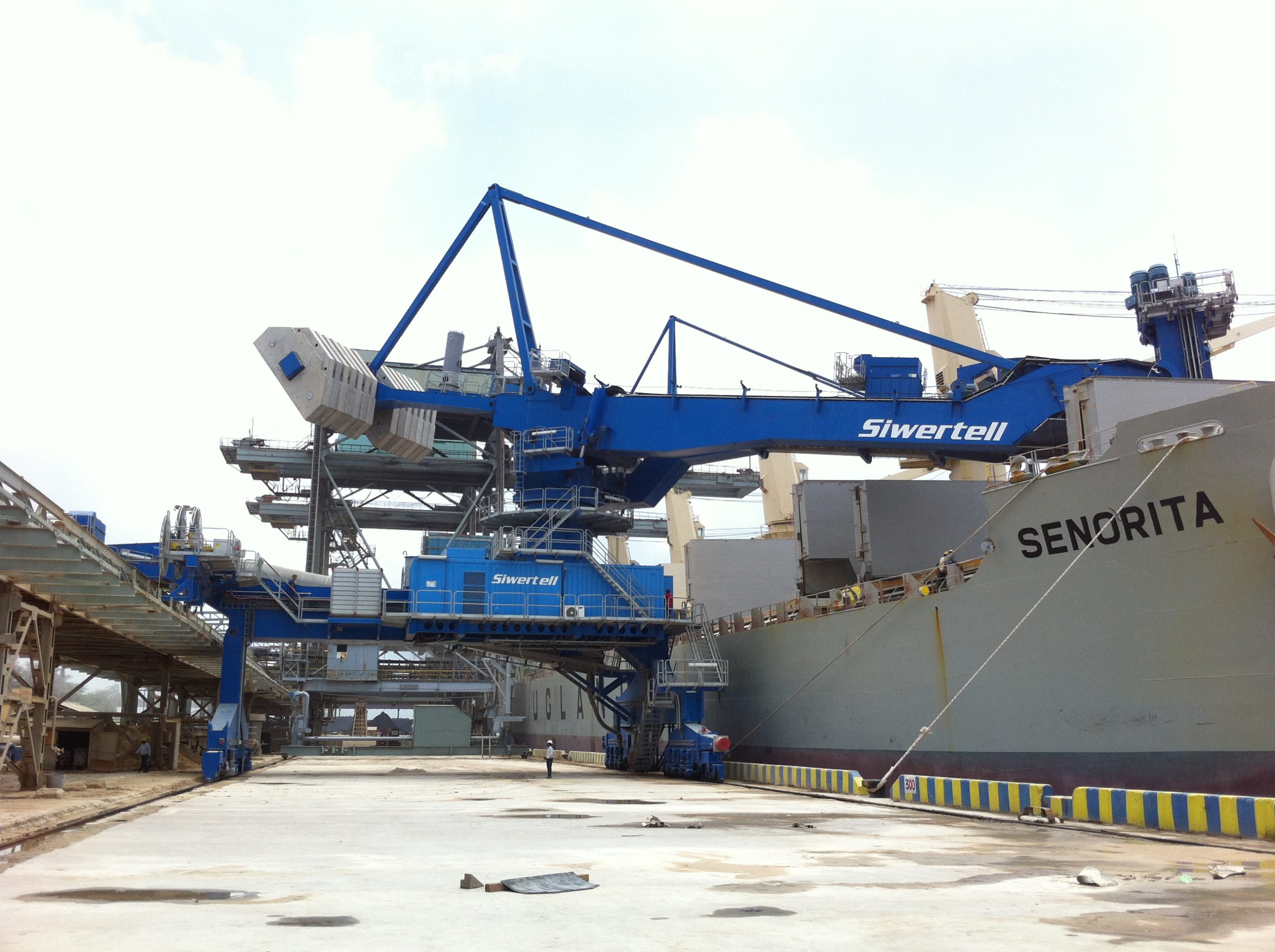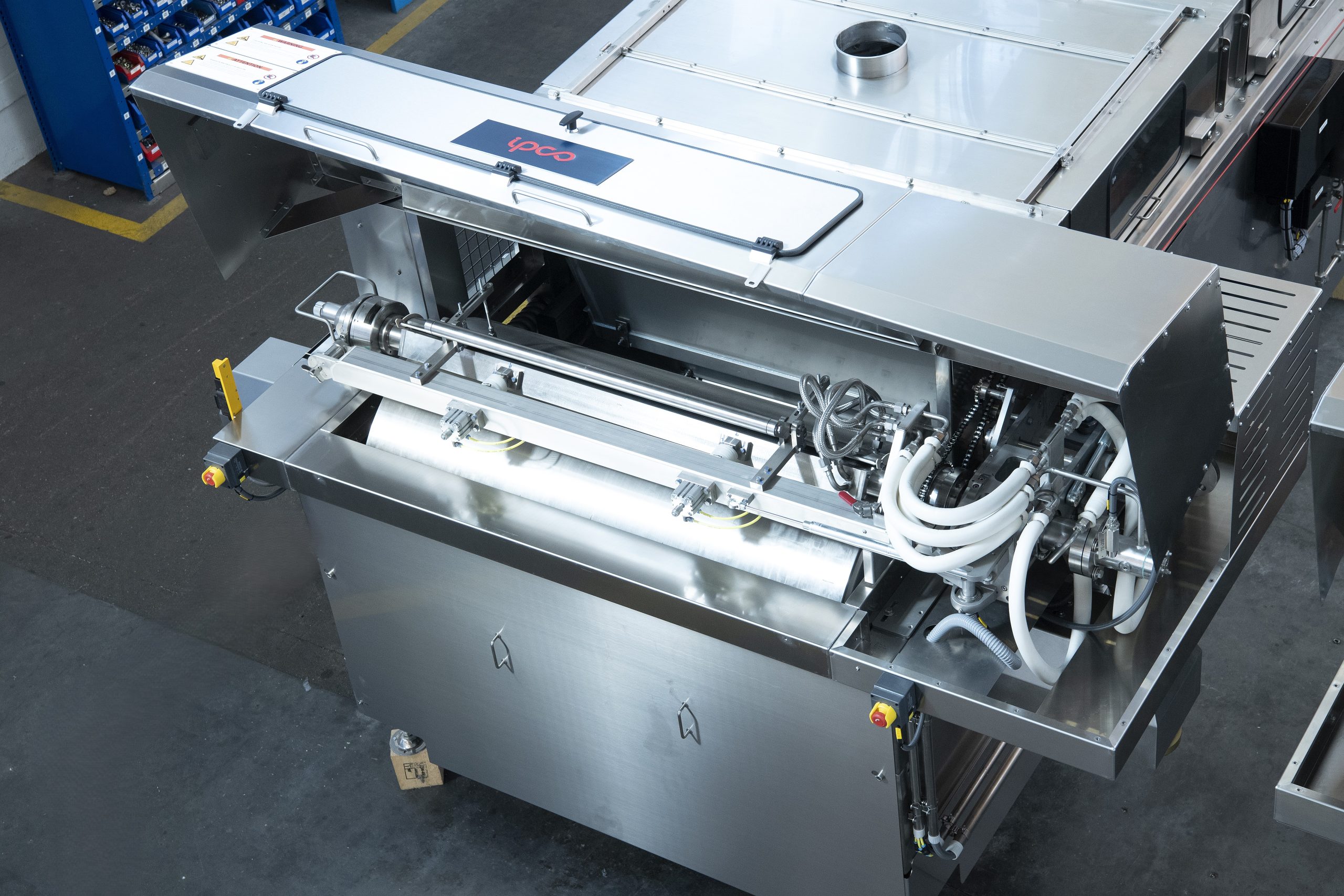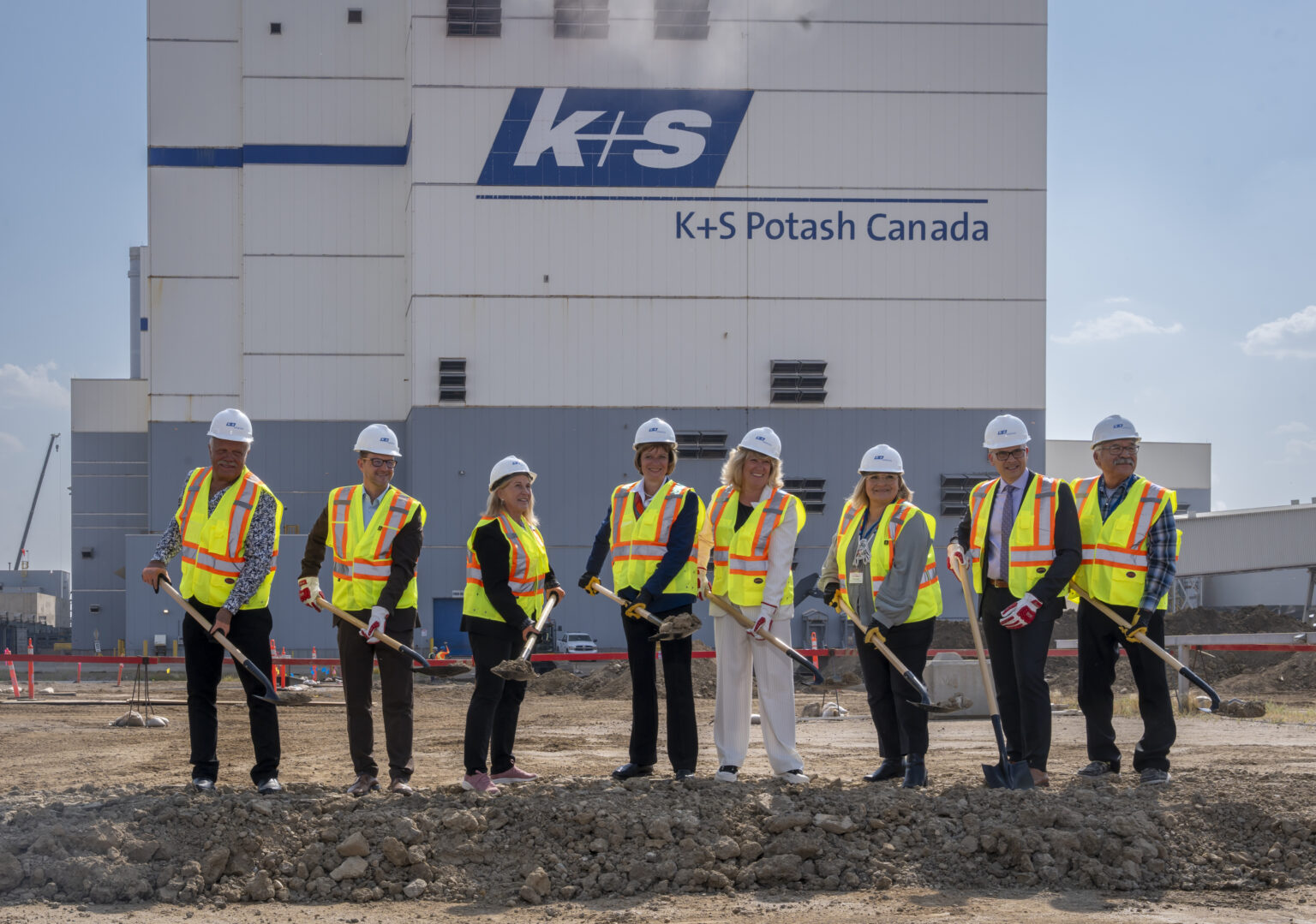Nitrogen+Syngas

31 October 2015
Problem No. 32: Temperature drop at bottom outlet of HP stripper in a Saipem urea plant
The stripper in a urea plant is a key item of high pressure equipment affecting the overall performance of a urea plant. There is a significant difference between the Stamicarbon CO2 HP stripper and the Saipem NH3 HP stripper when judging its performance. The bottom outlet temperature of a Stamicarbon CO2 stripper is normally relatively low (172- 175°C) and when the performance of the HP stripper reduces (meaning lower stripping efficiency) this temperature will increase indicating an increase in the ammonia content in the bottom outlet of the stripper. However, in a Saipem NH3 stripper the situation is totally different. The stripper bottom outlet temperature increases with a higher stripper efficiency and an operator in a Saipem urea plant tries to operate the urea plant at the maximum bottom outlet temperature. The maximum value is determined by the acceptable corrosion rates, for example, 224°C for a bimetallic stripper.

Mr Ngateno Utomo of PKT, Indonesia starts this round table discussion with a practical problem: We operate a Saipem urea plant with a design capacity of 1,725 t/d. The plant is 13 years old. During start-up the temperature at the HP stripper outlet can reach 202°C at 100% plant load (flow of steam 38 t/h), but after a few days the temperature drops to 194°C (and flow of steam drops to 20 t/h). We have tried trimming all operating conditions but the temperature cannot be increased even when we reduce the plant load to only 50%. We tried to block in and restart the plant, but the condition reoccurred. Can anyone explain what the problem is with the stripper?
Mr Prem Baboo of National Fertilizers Ltd in India replies: The reduction in steam flow indicates restriction of the steam, for example due to one of the following reasons:
- Check the conductivity of the steam condensate for any leakage. If the conductivity has increased (200-1000 micro mho/ cm) there is leakage in a tube or tube sheet and the shell might be pressurised with vapour causing restrictions of steam flow.
- Check the steam condensate drum level
- Check the stripper bottom level
I am fairly confident the first reason may be your problem. If a leakage is found, shut down immediately to avoid further damage/corrosion of the carbon steel shell side and the carbon steel tube sheet.
Ngateno responds: Thank you for your suggestions. We have checked and tried to increase and decrease the level in the stripper bottom and steam condensate drum level, but there is no effect on the temperature. The conductivity of the steam condensate is also normal.
Prem offers further advice: If the above points are fine, check the steam to the stripper control valve. Sometimes the internals are damaged and physically show normal opening but actual passage is blocked due to denting of the stem or foreign material blocking the control valve passage.
Ngateno replies: We have checked the steam control valve and then rechecked it by opening the bypass but it has no effect.
Mr Thai Son Phan of Phu My Fertilizer plant in Vietnam joins the discussion: Did you check the temperature into/out of the stripper steam condensate separator? I favour the temperature outlet. If it is not perfectly saturated (219°C at 22.5 bara) its heat exchange capacity decreases and the stripper bottom outlet temperature decreases gradually.
Mr Ali Salman Bokhari of Pak-American Fertilizers (Pvt.) Ltd. in Pakistan provides his support: In my view, you need to check the following:
- Do you have any vapour balance line installed between shell side of stripper and steam condensate (saturation) drum?
- Purge the shell side of stripper during normal operation and observe whether there is any positive change in stripper performance, more specifically steam consumption.
- Have you ever conducted a leak test of the stripper liquid distribution system and was it satisfactory?
- What type of ammonia feed pump is installed at your plant?
- Have you observed any coloration of product – yellowish or brownish?
- Have you observed some sort of oil layer or foam in the absorbers?
- What is the performance of other steam heaters at your plant?
Mr Umesh Kottara of Mangalore Chemicals and Fertilizers ltd. in India contributes with his recommendations: Check that the HP stripper shell side vent is opened sufficiently to vent the inerts present in the steam. Check the quality of the steam introduced. We had a similar problem due to bubbling of the carbon dioxide feed (we have a CO2 stripping process) into the urea solution at the stripper bottom due to a gasket leakage. We stopped the plant and found the gasket leaking as expected.
Fouling of stripper tubes may be another reason – adopt an appropriate chemical cleaning procedure for this, like EDTA.
Mr S.K. Gupta of IFFCO in India shares also his valuable experiences: I assume the stripper in your plant is bimetallic. What is the diameter of the tangential holes of the ferrule? In our experience a larger hole diameter solves the problem you indicated.
Ali returns: It is very interesting to know that you are increasing the hole size of the ferrule. What is the procedure?
SK replies: We have four urea strippers of the same heat duty in operation at our site. Initially we had two urea streams with titanium strippers. After an expansion of the site two more urea streams were added. The new urea streams have bimetallic strippers. We experienced the problem of temperature drop in the bimetallic strippers. We tried all the suggestions mentioned in this forum but to no avail. Saipem took notice and enlarged the ferrule hole diameter for their new bimetallic strippers. A few years back we replaced our aging two titanium strippers in the old urea streams with new bimetallic strippers. We have not experienced the problem in the new strippers. As per the advice of Saipem we are also planning to increase the ferrule hole diameter of the old strippers. Nowadays we are managing it by cutting off the feed for five minutes whenever there is problem in temperature drop.
Mr Pablo Gastón Schulz of Profertil in Argentina shares his experiences: We also operate a Saipem plant and have extensive experience with stripper heat transfer inefficiency. This year we had an abrupt trip due to a positioner failure in the stripper bottom level control valve. After this, the heat transfer efficiency in the stripper had a small step decrease, yet after each restart (we had two after this event) the problem got worse. Then, in just one week the stripper efficiency decreased in such a way that we were forced to shut down, since the plant could not be operated any more.
Analysing the DCS trends, we managed identify the most probable cause: liquid maldistribution in the tubes. One key symptom was the noise in the MP steam flow, which got worse with time. The fact was that during this emergency trip, the ferrules became loose, due to the pressure buildup within the tubes. We performed a leak test during the turnaround and got an order of magnitude more leakage than allowable.
Since the male inserts of the ferrule were deformed (slightly, not visible), they could not be fixed in position by the metal grid. So we installed Teflon washers in between the ferrule and the tube, to tighten the ferrule. This allowed us the smallest leakage ever registered in our plant, and since then the stripper efficiency boosted up. Yet for the sake of being sure before you shut down the plant,
I suggest you take a systematic approach:
Steam side:
- Check for inerts in the shell. Open the vent.
- Check actual level in steam reservoir of the stripper (V109). If the shell is partially flooded you loose heat transfer area.
- Check the PV that controls the steam pressure, also the transmitter (in case the controller is failing)
Process side:
If you had a cold start up, if too much carbamate was present at the time of overflow of the reactor, a high pressure is built up within the tubes and despite the composition eventually becoming OK, this disruption in liquid distribution cannot be reversed by any load reduction. The only way we have found to reverse this is by stopping all flow (we have a procedure for this). The key is that when having a hot restart the composition is OK from the very beginning so there is no disruption. You only have to be very careful to keep the NH3/CO2 ratio in the normal range. Also make sure that the problem is not coming from another area. Check the delta T of the reactor, and sample the outlet to verify conversion and N/C ratio. Check the actual N/C ratio by having an instrument specialist verify CO2 and NH3 measurements. When we had this problem typically there is more water in the process since the decomposition is shifted to the MP and LP sections. Be careful not to allow the PV020 (MP steam to stripper steam drum) to be saturated to 10%, along with the MP decomposer TIC. We made this mistake and overloaded the LP decomposer, and this led to E08 (CW condenser) eventually plugging, leading to a shut down. This was because the proportion of gases from the LP decomposer and gases from waste water treatment column was distorted, making the solution less aqueous. During shutdown, check that the distributor toroid weld is not damaged, also check the serrated overflow. This could also lead to maldistribution of liquid. We also had the gas orifice of the ferrules enlarged by Saipem along with moving the tangential holes so that the liquid level increases. You are definitely facing the same problem we had.
Ali replies: I agree with your comments. Actually uneven opening of the hand control valve controlling the reactor level (due to any reason, instrument malfunction or misoperation) causes a hammering impact on the liquid distribution system resulting in displacement of ferrules. We have also faced this problem in our TEC plant during early years of operation.
You must be familiar with ferrule and swirl operation. Actually stripper efficiency is based on the film uniformity of the urea solution in terms of the thickness in the falling film heater and film thickness is dictated by the velocity of the urea solution through the tubes, which in turn is dictated by the liquid head and swirls hole size. That is why hydrolysis occurs in the stripper and fluctuates with fluctuations in plant load. In extreme conditions it may lead to dry run operation, which is a nightmare situation.
Mr Akash Deep Mawkin of National Fertilizers Limited in India shares his suggestions: Probable causes for not achieving the stripper outlet temperature:
- stripper level is actually running very high (touching the tube sheet and restricting the vapour passage through tubes);
- steam condensate separator level is very low (no saturated steam is going to stripper);
- restriction in steam inlet to stripper;
- reactor outlet pipe having leakage (inside the reactor);
- poor stripper liquid distribution (may be due to the ferrule tangential portion being damaged due to thinning);
- temperature and flow indicators are malfunctioning (this can be checked if there adverse effect on MP section).
Mr Zeeshan Shoaib of Fauji Fertilizer Company Limited in Pakistan provides his input: After reading all of the above discussions, in my opinion the condition of the ferrules needs to be checked. Improper film generation may cause poor thermal efficiency of the stripper. Sometimes the ferrules nozzle holes are blocked or ferrules were out of place causing gas bypassing, indicated by a high top stripper temperature. In addition, it is important to maintain the proper NC ratio in the system.
During start-up, don’t let the stripper temperature exceed 198 to 200°C at 60 to 70% plant load. Raise the temperature of the stripper bottom gradually. If high temperature MS steam is given too quickly hot spots may appear on the inner wall of the stripper tube and cause channeling. This problem may occur due to poor indication of the level transmitter that misleads the stripper bottom holder level controller. A high level may cause channeling.






